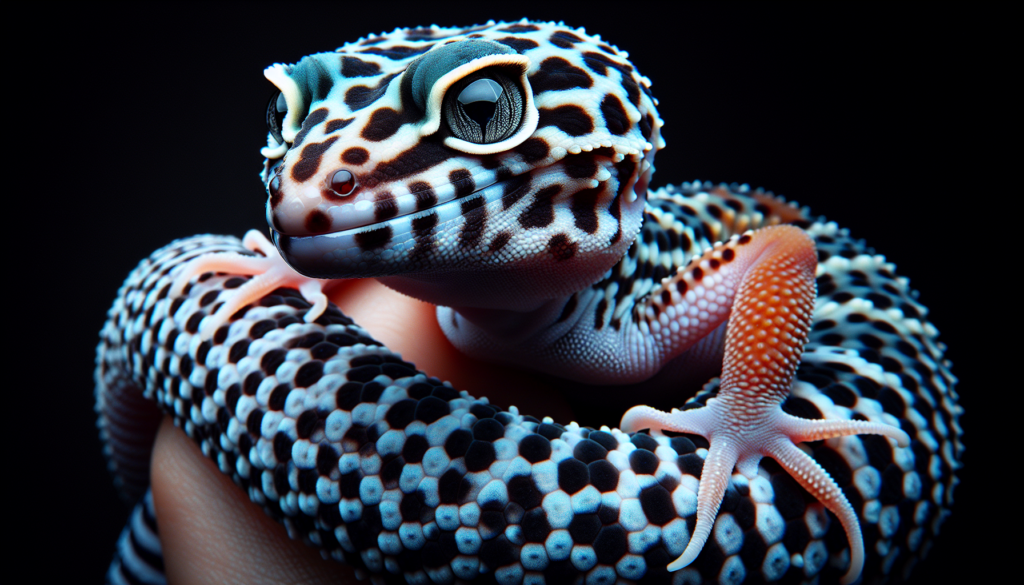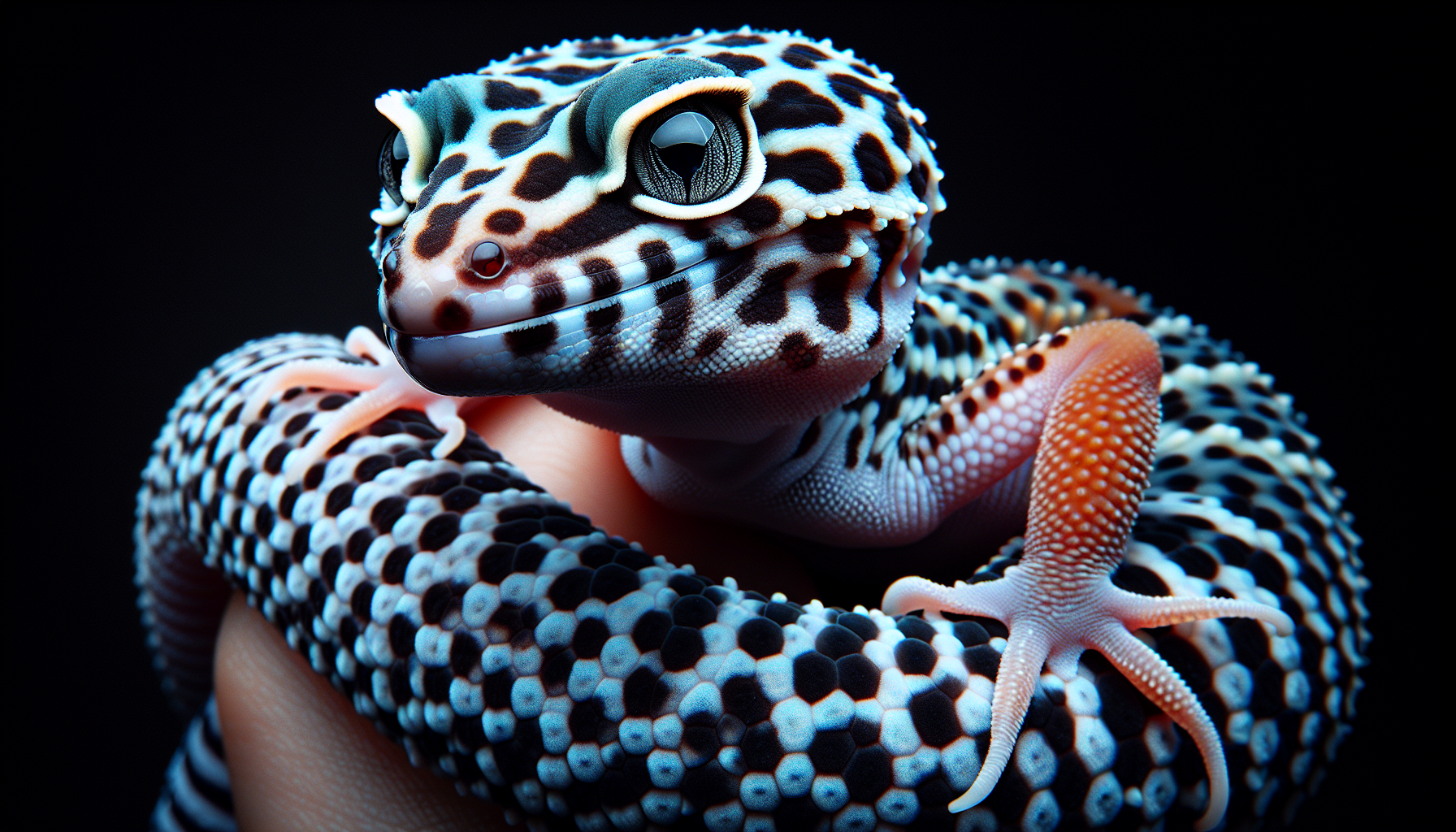Have you ever wondered if it’s safe to touch a leopard gecko? In this article, we’ll explore the question and provide you with all the information you need to know. Leopard geckos are fascinating creatures, known for their unique appearance and docile nature. However, it’s important to understand the potential risks and precautions associated with handling these reptiles. So, if you’re curious about whether or not you can safely interact with a leopard gecko, keep reading to find out.
Handling a Leopard Gecko
Leopard geckos are unique and fascinating creatures that make wonderful pets. However, handling them requires careful consideration and knowledge to ensure the well-being of both the gecko and the handler. In this article, we will explore the best practices for handling leopard geckos, understanding their behavior, potential risks of handling, preparing to handle, proper handling techniques, respecting their boundaries, interacting with tame or wild geckos, special considerations for pregnant or shedding geckos, and improving confidence in handling.
Best Practices for Handling
When it comes to handling leopard geckos, it’s essential to follow certain best practices to create a positive and safe experience for both you and your gecko. First and foremost, always approach the handling process with a calm and gentle demeanor. This will help to reduce stress and anxiety for the gecko. Additionally, wash your hands before handling to eliminate any foreign scents that can potentially cause distress to the gecko.
Avoiding Rough or Aggressive Handling
Leopard geckos have delicate bodies and sensitive skin, so it’s important to avoid rough or aggressive handling. Never grab or squeeze the gecko tightly, as this can cause injury or stress. Instead, use a gentle touch and support their body properly to ensure their comfort and safety. By maintaining a relaxed and cautious approach, you can avoid any potential harm or discomfort to the gecko.
Supervising Children during Handling
If you have children who are eager to interact with your leopard gecko, it is crucial to closely supervise their handling sessions. Children may not possess the same level of understanding or awareness of the gecko’s needs, making it vital for them to be guided appropriately. Educate your children about the proper techniques and gently remind them to be careful and gentle throughout the entire interaction.
Understanding Leopard Gecko Behavior
To handle a leopard gecko effectively, it is essential to have a good understanding of their natural behaviors. Leopard geckos are primarily nocturnal creatures, which means they are most active during the evening and night. Understanding this natural behavior will help you determine the right time to handle your gecko and respect their natural rhythm.
Signs of Stress or Discomfort in Leopard Geckos
Leopard geckos can express their stress or discomfort in various ways. Some common signs to look out for include tail rattling, hissing, biting, or attempting to escape. If you notice any of these signs, it is crucial to immediately cease handling and give the gecko space to calm down. Being attentive to their behavior and respecting their boundaries is vital to their overall well-being.
Potential Risks of Handling a Leopard Gecko
While leopard geckos are generally docile and non-aggressive, there are potential risks associated with handling. Bites or scratches can occur if the gecko feels threatened or provoked. Additionally, there is a risk of transmitting bacteria or parasites from the gecko to humans, especially if proper hygiene practices are not followed. Furthermore, improper handling techniques can cause injuries to the gecko, leading to stress or physical harm.
Preparing to Handle a Leopard Gecko
Before handling a leopard gecko, it is essential to create a safe and stress-free environment for both you and the gecko. Ensure that the enclosure is secure and free from any potential hazards. This includes removing any sharp objects, closing any gaps where the gecko could escape, and providing appropriate substrate to prevent injury. By preparing the environment, you can minimize the chances of accidents or harm during handling.
Washing Hands before Handling
Maintaining proper hygiene is crucial when handling leopard geckos. Always wash your hands thoroughly with mild soap and water before handling to remove any potential irritants or harmful substances. This will help to protect the gecko from any external contaminants and reduce the risk of transmitting bacteria or parasites.

Handling Tools and Equipment
Handling tools and equipment can provide an additional layer of safety and security when interacting with leopard geckos. Tools such as gentle tongs or a soft cloth can be used to support the gecko’s body and reduce the chances of accidental injuries. However, it is important to note that these tools should be used with care and never in a way that causes discomfort or harm to the gecko.
Proper Technique for Handling a Leopard Gecko
Mastering the proper technique for handling a leopard gecko is crucial to ensure their comfort and safety. Approach the gecko slowly and gently, avoiding sudden movements that may startle them. When picking up the gecko, it is important to support their body properly, ensuring that you are not putting pressure on their delicate limbs or tail. Never lift them by their tail, as it can cause them extreme stress and potential harm.
Respecting the Leopard Gecko’s Boundaries
Leopard geckos, like any living creature, have their own boundaries and comfort levels. It is crucial to recognize the signs of discomfort and respect their need for personal space. If the gecko shows signs of stress or attempts to retreat, gently place them back in their enclosure and give them time to relax. Building trust and a positive bond with your gecko takes time and patience.
Recognizing Signs of Discomfort
Leopard geckos have unique body language that can indicate their level of comfort or discomfort. It is important to be observant and recognize signs such as hiding, tail wagging, freezing, or excessive vocalization. These behaviors suggest that the gecko may not be in the mood for handling and should be left alone to calm down.
Giving the Gecko Space
During handling sessions, it is crucial to give the gecko enough physical and emotional space. Avoid overcrowding them or handling them for extended periods, as this can cause undue stress. By respecting their need for personal space, you can create an environment of trust and comfort.
Building Trust over Time
Building trust with a leopard gecko requires patience and consistency. By handling them regularly but gently, you can gradually build a positive relationship with your gecko. Avoid rushing the process and always prioritize their well-being and comfort. With time, the gecko will become more accustomed to your presence and handling.
Interacting with a Tame or Hand-Tamed Leopard Gecko
Tame or hand-tamed leopard geckos have been socialized to human interaction and tend to be more comfortable with handling. It is important to respect their personality and preferences when interacting with them. Some geckos may enjoy being held or stroked, while others may prefer to explore their environment. Observe their reactions and respond accordingly to create a positive and rewarding experience for both of you.
Bonding with the Gecko
Bonding with a leopard gecko involves creating a mutual trust and understanding. Spend time sitting near their enclosure, talking softly, and offering treats. This allows the gecko to associate your presence with positive experiences and reinforces the bond. Remember, each gecko is unique, so it’s important to listen and respond to their individual needs.

Rewarding Positive Interactions
Positive reinforcement is key when it comes to interacting with a leopard gecko. Rewarding their positive interactions, such as willingly climbing onto your hand or calmly exploring your touch, promotes trust and strengthens your bond. This can be done by offering small treats or providing a comfortable and enriching environment for them to explore.
Interacting with a Wild or Untamed Leopard Gecko
Interacting with a wild or untamed leopard gecko requires a different approach. These geckos are not accustomed to human interaction and may exhibit more defensive behaviors. It is important to limit interactions and focus on observation and monitoring from a distance. Seek professional guidance to ensure the safest and most appropriate approach for wild or untamed geckos.
Limiting Interactions
For wild or untamed leopard geckos, it is crucial to limit interaction to minimize stress and potential harm. These geckos may be more prone to defensive behaviors and may feel threatened by human presence. It is best to allow them to acclimate to their new environment at their own pace while providing the necessary care and support.
Observation and Monitoring
Observation and monitoring play a vital role in understanding and supporting wild or untamed leopard geckos. Observe their behavior from a distance and look for signs of stress or discomfort. This allows you to adjust their environment appropriately and ensure their overall well-being. Patience and understanding are essential when working with wild or untamed geckos.
Seeking Professional Guidance
Handling wild or untamed leopard geckos can be challenging, and seeking professional guidance is highly recommended. Experts in reptile care can provide valuable insights and guidance tailored to your specific situation. They can offer advice on creating an appropriate environment, safe handling techniques, and tools to help you establish a positive relationship with your gecko.
Special Considerations for Pregnant or Shedding Leopard Geckos
Pregnant or shedding leopard geckos require special consideration during handling. These delicate processes can be stressful for the gecko, and it is important to minimize any additional stressors.
Reducing Stress and Handling
Pregnant leopard geckos may be more prone to stress during handling, which can potentially harm both the gecko and the developing eggs. It is best to limit handling during this time and allow the gecko to focus on the incubation process. Minimizing stress and disturbances helps ensure a successful breeding period.
Supporting the Gecko during Shedding
Leopard geckos shed their skins periodically, and this can be an uncomfortable process for them. During shedding, they may exhibit increased sensitivity and may prefer not to be handled. It is important to respect their need for privacy and wait until after the shedding process to handle them again.
Avoiding Disturbing the Nest during Pregnancy
If you have a pregnant leopard gecko, it is important to avoid disturbing the nest or eggs. Manipulating the eggs or changing the environment can disrupt the incubation process and harm the developing embryos. It is best to consult with an expert for guidance on proper care and handling during this delicate time.
Improving Confidence in Handling Leopard Geckos
Handling leopard geckos can be intimidating for new owners, but with time and practice, confidence can be gained. Here are some tips to help improve your confidence in handling your gecko.
Gradually Increasing Handling Time
Start with short handling sessions that gradually increase in duration as both you and the gecko become more comfortable. Gradually increasing handling time allows the gecko to acclimate to your touch and builds confidence for both of you. Always prioritize the well-being and comfort of the gecko, making sure not to push their limits.
Seeking Expert Advice
Seeking expert advice from reputable sources, such as veterinarians or experienced reptile keepers, can provide valuable insights and guidance. They can address any specific concerns or questions you may have and offer tailored advice for your leopard gecko’s individual needs. Learning from experienced professionals can boost your confidence and ensure the best possible care for your gecko.
Understanding Individual Gecko’s Behavior
Leopard geckos, like any living creatures, have different personalities and behavioral tendencies. Understanding your gecko’s unique behavior will enable you to better anticipate their needs and respond accordingly. Spend time observing and studying their behavior to develop a deeper understanding of their individual traits.
Handling a leopard gecko is a privilege that comes with great responsibility. By following these best practices, understanding their behavior, recognizing potential risks, preparing properly, and practicing respectful and safe handling techniques, you can develop a trusting and enriching relationship with your leopard gecko. Remember, each gecko is unique, so always prioritize their comfort and well-being, and never hesitate to seek professional guidance if needed.
